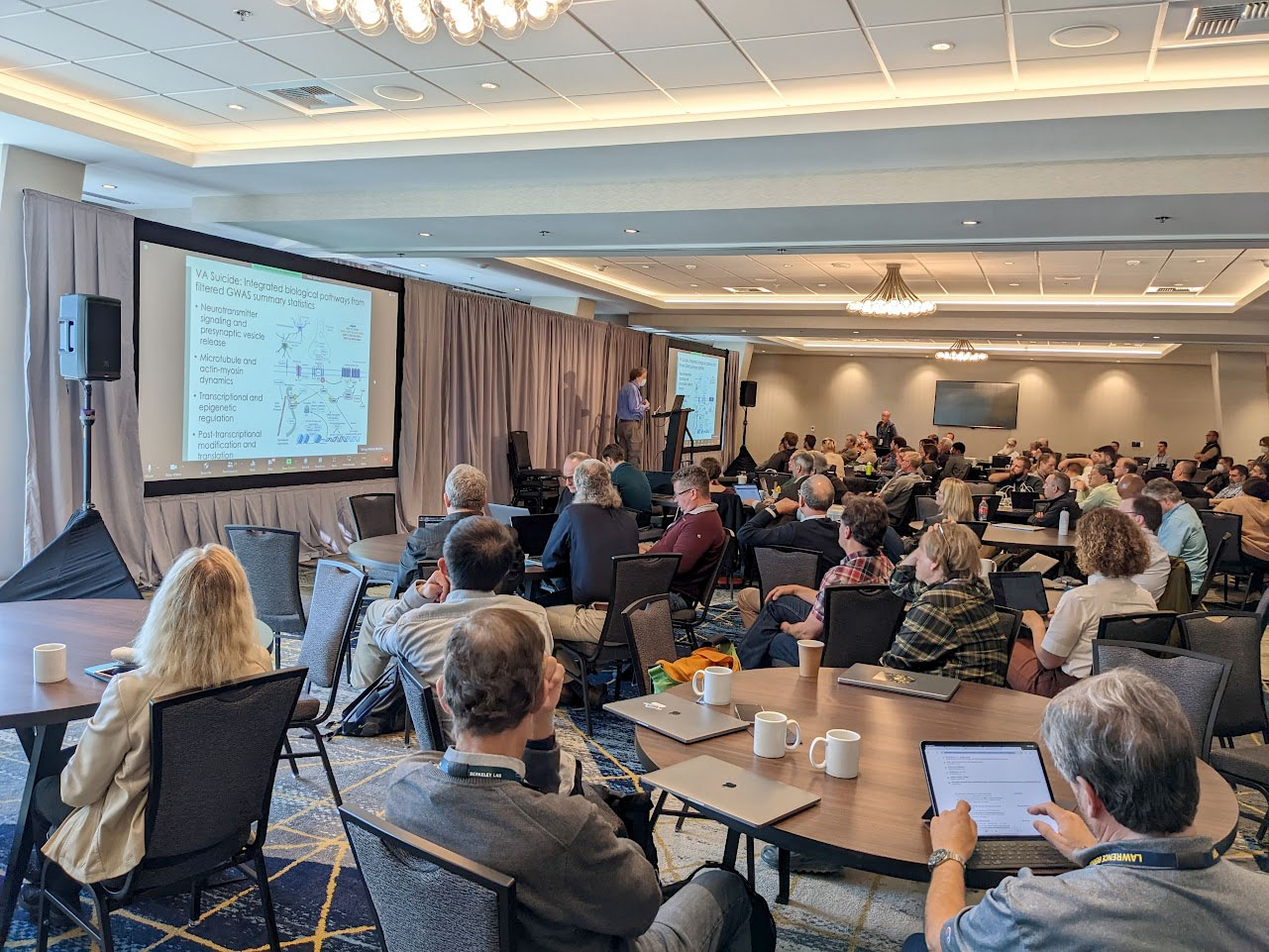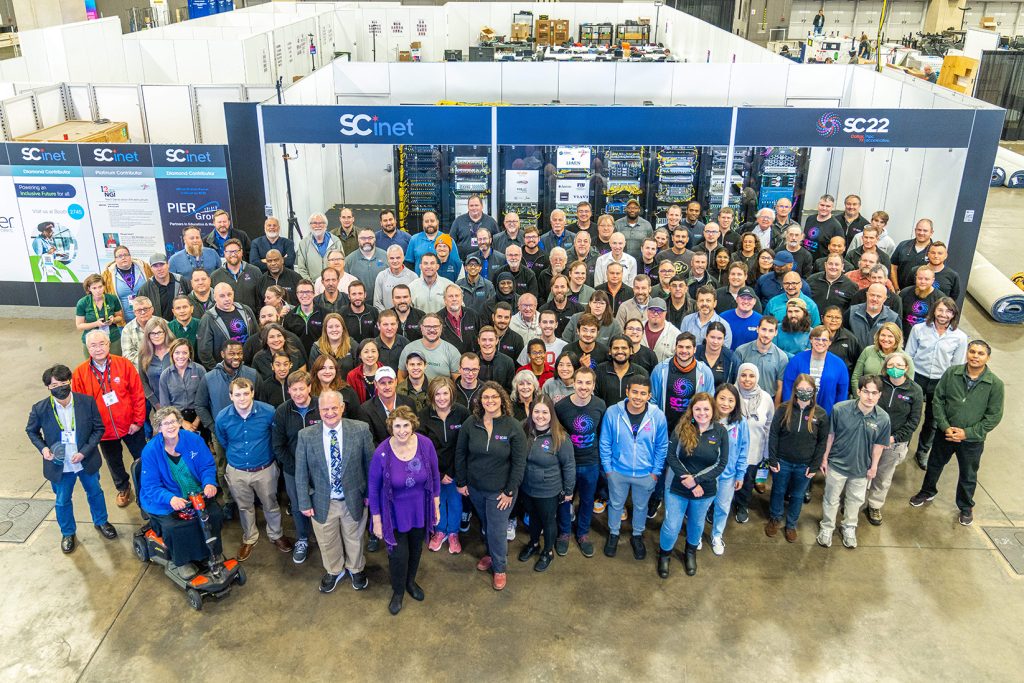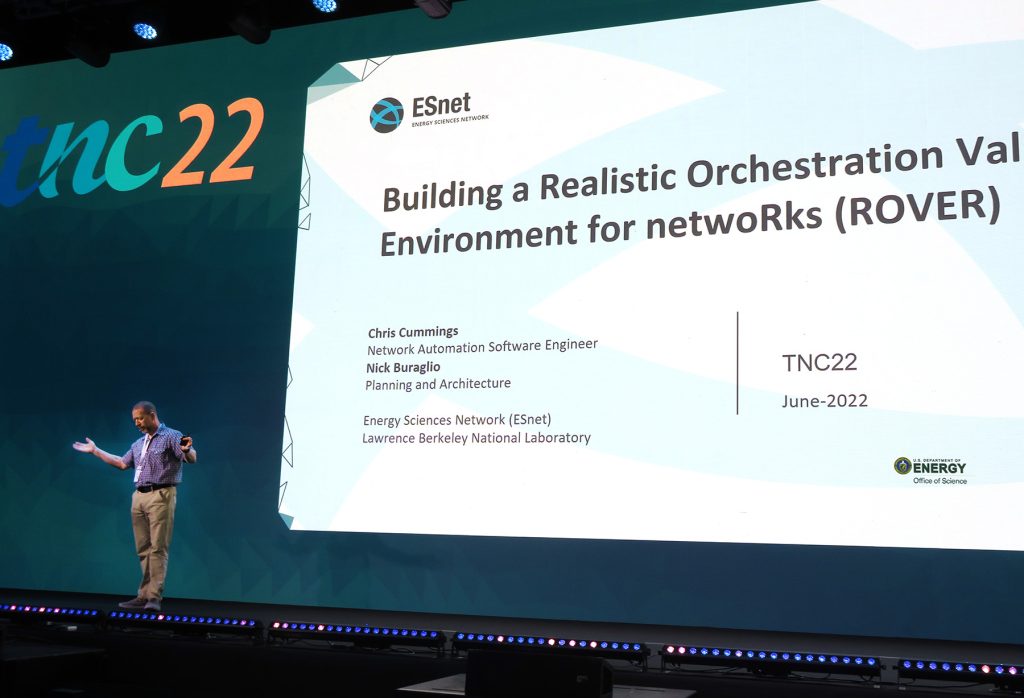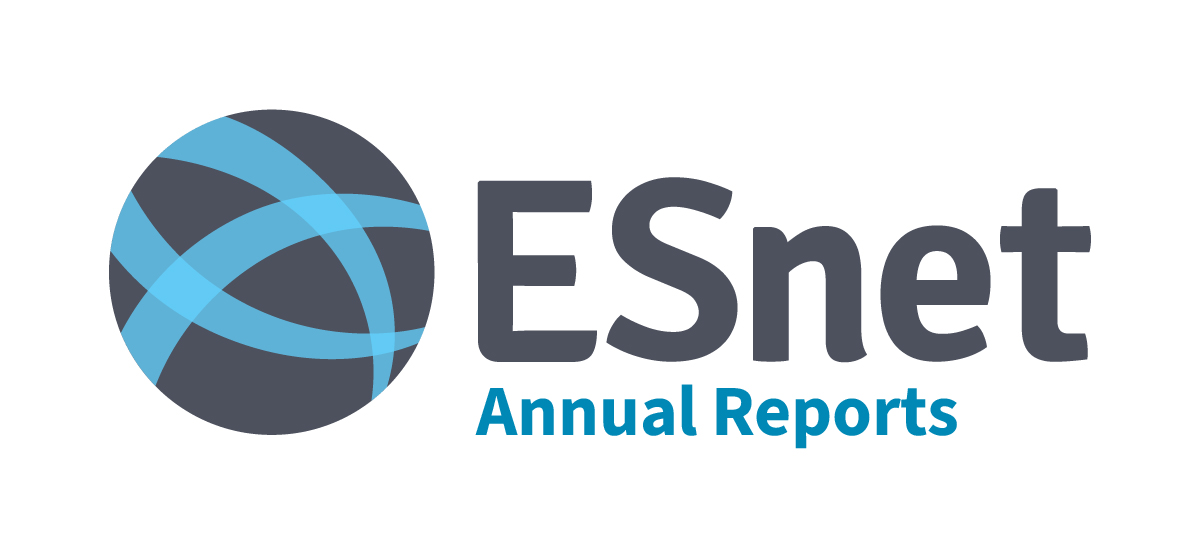ESnet’s mission compels us to share knowledge, experience, and findings with both the DOE ecosystem and the global R&E networking community, including commercial networking technology providers. Technical outreach and community building guarantee that we remain at the forefront of understanding emerging scientific needs and technology options while also ensuring visibility for DOE’s global science collaborations.
Community engagement and knowledgetransfer activities encompass a variety of approaches, including technical consulting, publishing, and participation in DOE and other U.S. scientific planning endeavors. Additionally, ESnet contributes through keynote speeches, technical presentations, demonstrations, and workshops at numerous high-profile conferences annually.
ESnet Launches First Annual Confab Gathering
In October 2022, ESnet’s Science Engagement Group convened and hosted ESnet’s first Science User conference to foster cross-interactions between DOE research scientists, users, network engineers, and stakeholders. The focus was different from the longtime ESnet Site Coordinators Committee (ESCC) meeting, a technical forum that brings together IT representatives from the ESnet-connected sites. Held in Berkeley, California, in conjunction with the unveiling of ESnet6, Confab22 sought to showcase how scientists across domains use ESnet6 and its advanced services effectively and to provide a platform for bidirectional conversations, particularly across siloed application and IT communities.
The technical program enabled discussions among the 100-plus attendees about co design activities including:
- ESnet6 capabilities in development and science user thoughts, with ESnet leadership
- Exascale biology compute needs and network uses, with Dan Jacobson of Oak Ridge National Laboratory
- ARIES project (see page 33) and future “superlab” network uses, with Rob Hovsapian of National Renewable Energy Laboratory
- Field Science and Wireless/5G use cases, with ESnet staff
- DOE Integrated Research Infrastructure initiative with ASCR Facilities Director Ben Brown
- Derecho simulation and data visualization with Paul Ullrich, U.C. Davis, and Brad Carvey, Sandia National Laboratory.

The discussions started at Confab have resulted in several new collaborations between ESnet’s Science Engagement group and external stakeholders. The conference will now become a regular ESnet activity driving outreach and user support efforts.
Other Key Conferences

SC
Each year, ESnet participates in the International Conference for High Performance Computing, Networking, Storage, and Analysis, known simply as SC, one of the largest high performance computing conferences in the world, with an emphasis on dataintensive scientific support. The contributions can be divided into two main categories: First, ESnet offers connectivity and services to the conference, facilitating live demonstrations and tests. Second, ESnet staff members actively participate as essential volunteer team members responsible for constructing SCinet — an annual conference network and the “world’s fastest network” for the duration of the conference. This network serves as a testbed for innovative problem-solving strategies tailored to address challenges within the HPC community
ESCC
Each year, ESnet convenes the ESnet Site Coordinator Committee to share insights and guide the future of the ESnet infrastructure. In 2022, the group, made up of technical representatives from ESnet’s supported sites, met in person for the first time since 2019 to collaborate on operational, network engineering, and security innovations and challenges.
OFC
ESnet participates in talks and demonstrations for OFC, the Optical Fiber Communication Conference and Exhibition sponsored by Optica, IEEE Communication Society, and IEEE Photonics Society, as well as in building OFCnet, an unconventional high-speed network connecting the show floor to a research center in Chicago.
Internet2 Technology Exchange
Hosted by Internet2, a community providing a secure high-speed network, Cloud solutions, research support, and services tailored for research and education, the TechX conference brings together the global R&E community.
The Quilt Annual Meeting
The Quilt is a national coalition of non-profit U.S. regional R&E networks representing 43 networks across the country. Members of The Quilt provide advanced network services and applications to 900-plus universities and thousands of other educational and community anchor institutions.
TNC
The largest R&E networking conference, TNC is co-funded by the European Union via the GÉANT (GN4-3) Project. It attracts more than 800 participants from 70+ countries, representing national and regional research and education networks, schools and universities, technology providers, and scientific projects.
ACM SIGCOMM
ACM SIGCOMM is the flagship annual conference of the ACM Special Interest Group on Data Communication, an important conference in networking held in Amsterdam in 2022. ESnet staff co-authored the invited paper “Transport Control Networking: Optimizing Efficiency and Control of Data Transport for Data-Intensive Networks” and gave a keynote.

Technical Presentations and Publications
In 2022, ESnet staff delivered 57 technical presentations, published two dozen conference papers and journal articles, and filed one patent. (For a full list, with links where available, visit es.net/publications2022.)
The following examples were selected to illustrate ESnet’s work in the applied research areas featured in this report.
Accelerating data movement
J. Dunefsky, M. Soleimani, R. Yang, J. Ros-Giralt, M. Lassnig, I. Monga, F. Wüerthwein, J. Zhang, K. Gao, Y.R. Yang, “Transport Control Networking Optimizing Efficiency and Control of Data Transport for data-intensive Networks.” NAI ‘22: Proceedings of the ACM SIGCOMM Workshop on Network-Application Integration (August 2022): 60-66. https://doi.org/10.1145/3538401.3548550
E. Dart, “The Science DMZ: Strategic Future” (technical presentation, Corporation for Education Network Initiatives in California [CENIC] conference, Monterey, CA, September 2022).
AI-driven networking
M. Kiran, N. Buraglio, S. Campbell, “Using Deep Learning to Improve Data Transfers for WAN” (technical presentation, the Asia Pacific Advanced Network [APAN 53] Conference, AI-Driven Networks Working Group, Dhaka, Bangladesh, March 2022). S. Murugesan, M. Kiran, B. Hamann, G.H. Weber, “Netostat: Analyzing Dynamic Flow Patterns in HighSpeed Networks.” Cluster Computing 25 (March 2022): 2915–2930. https://doi.org/10.1007/s10586-022-03543-0
H. Jin, K. Raghavan, G. Papadimitriou, C. Wang, A. Mandal, P. Krawczuk, L.Pottier, M. Kiran, E. Deelman, P. Balaprakash, “Workflow Anomaly Detection with Graph Neural Networks.” Presented at 2022 IEEE/ACM Workshop on Workflows in Support of Large-Scale Science (WORKS), Dallas, TX, November 2022.
Automation testing environments
N. Buraglio, C. Cummings, “Building a Realistic Orchestration Validation Environment for netwoRks (ROVER)” (technical presentation, TNC22/GÉANT Conference, Trieste, Italy, June 2022).
Edge compute management
E. Kissel, C. Shiflett, “Janus Container Management and the EScp Data Mover” (Department of Energy booth demonstration, The International Conference for High Performance Computing, Networking, Storage, and Analysis [SC22], Dallas, TX, November 2022).
IETF standards activity
N. Buraglio, C. Cummings, R. White, “Unintended Operational Issues With ULA” Presented at Internet Engineering Task Force (IETF114) conference, V6Ops Network Working Group, Philadelphia, PA, July 2022.
In-network caching
J. Bellavita, A. Sim, K.Wu, I. Monga, C. Guok, F. Wüerthwein, D. Davila, “Studying Scientific Data Lifecycle in On-demand Distributed Storage Caches.” SNTA ‘22: Fifth International Workshop on Systems and Network Telemetry and Analytics (June 2022): 43-50. https://doi.org/10.1145/3526064.3534111
Orchestrated and coordinated data movement
F. Wüerthwein, J. Guiang, A. Arora, D. Davila, J, Graham, D. Mishin, T. Hutton, I. Sfiligoi, H. Newman, J. Balcas, T. Lehman, X. Yang, C. Guok, “Managed Network Services for Exascale Data Movement Across Large Global Scientific Collaborations.” Presented at 2022 4th Annual Workshop on Extreme-scale Experiment-in-the-Loop Computing (XLOOP), 2022 Supercomputing Conference (SC22), Dallas, TX, November 2022.
Quantum networking
I. Monga, E. Saglamyurek, W. Wu, “Quantum Communication: A Physical Experiment or a Network Paradigm Shift?” (technical presentation, 9th Annual International Workshop on Innovating the Network for Data-Intense Science [INDIS], Dallas, TX, November 2022).
A. Derevianko, E. Figueroa, J. MartÍnez Rincón, I. Monga, A. Nomerotski, C.H. Peña, N.A. Peters, R. Pooser, N. Rao, A. Slosar, P. Spentzouris, M. Spiropulu, P. Stankus, W. Wu, S. Xie, “Quantum Networks for High Energy Physics.” arXiv:2203.16979 [quant-ph] (March 2022).
Wireless integration
M. Kiran, “5G for Science” (technical presentation, 2022 Department of Energy [DOE] Cybersecurity and Technology Innovation Conference, Portland, OR, June 2022).
A. Wiedlea, “Exploring the Wireless Edge for Science: What Does that Mean for Us?” (technical presentation, 2022 Corporation for Education Network Initiatives in California [CENIC] Annual Meeting, Monterey, CA, September 2022).
Understanding real-time streaming
R. Kube, R.M. Churchill, C.S. Chang, J. Choi, R. Wang, S. Klasky, L. Stephey, E. Dart, M.J. Choi, “Near Real-Time Streaming Analysis of Big Fusion Data.” Plasma Physics and Controlled Fusion 64, No. 3 (February 2022).
